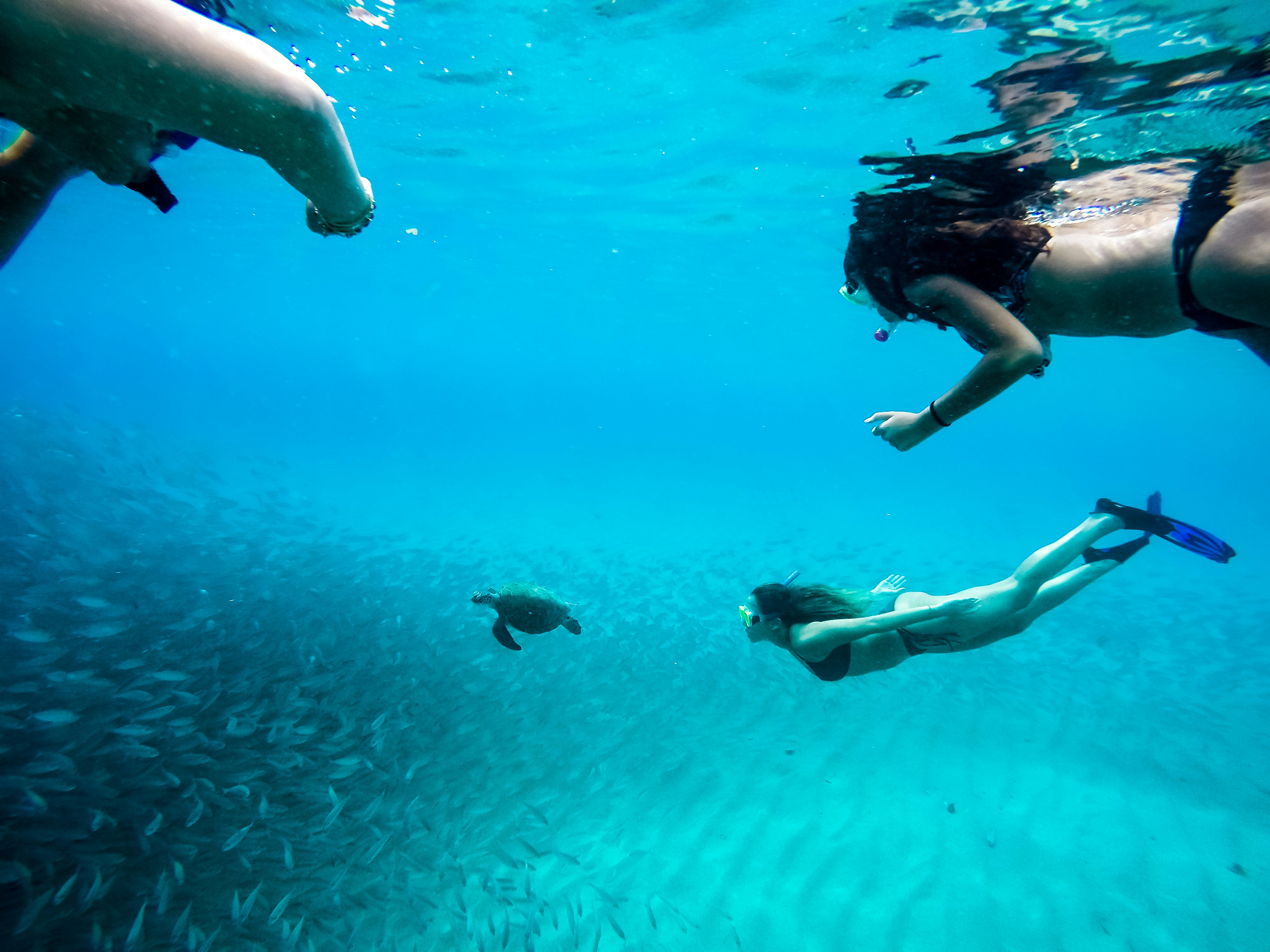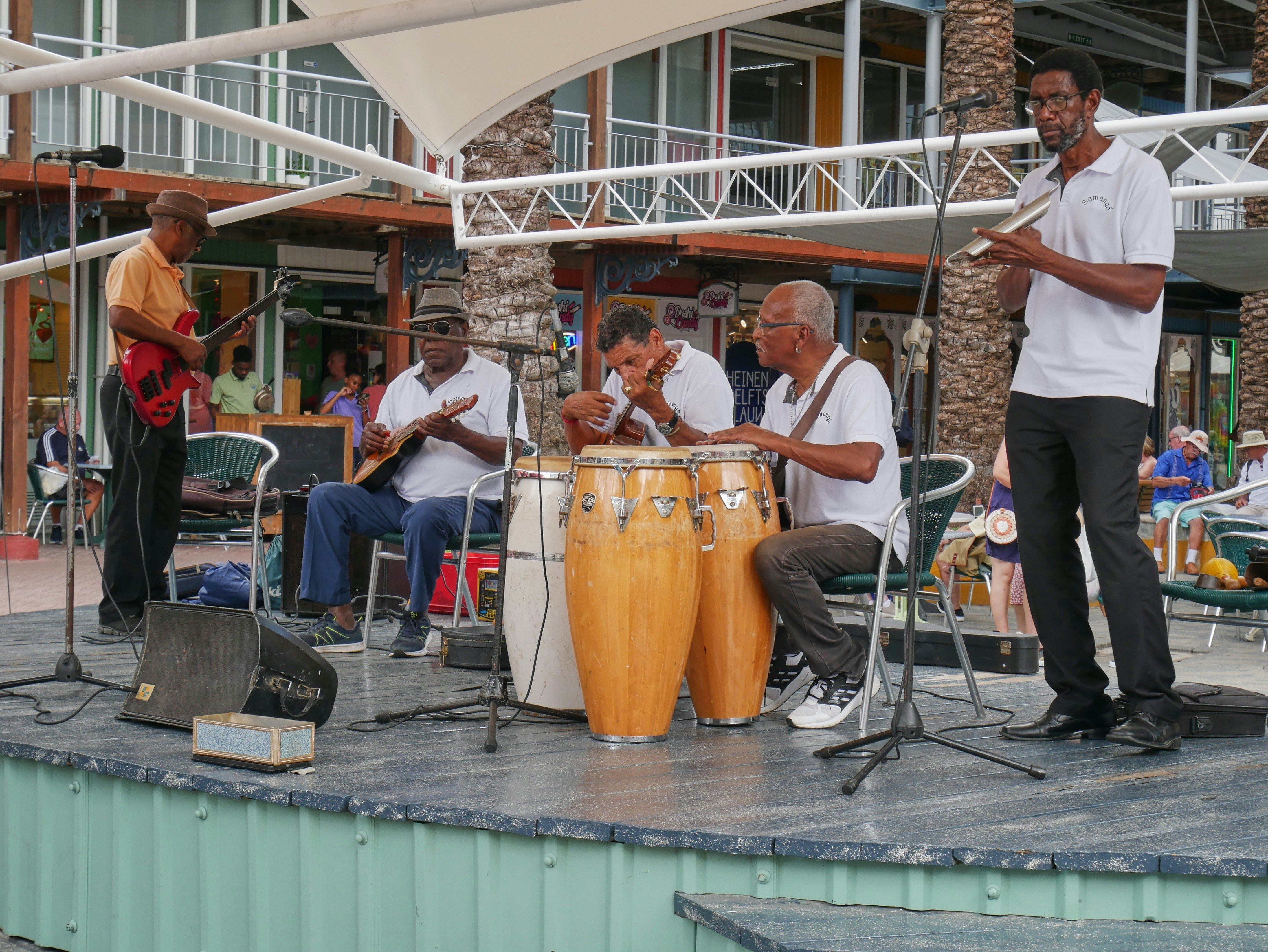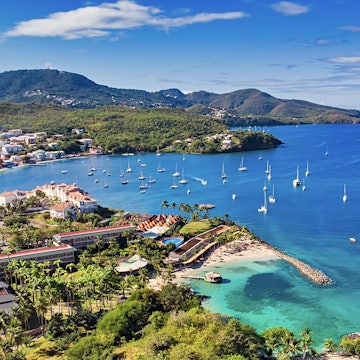

Curaçao is a dynamic and multi-cultural Caribbean destination that offers a host of unforgettable experiences. elvirkins/Shutterstock
When I think of Curaçao, three words come to mind: cultural, cosmopolitan and colorful.
This vibrant and dynamic place draws on so many diverse cultural influences that it can feel like you’re in many places at once. But since the island brings it it all together so seamlessly, you can, in fact, only be in Curaçao.
In the southern Caribbean, Curaçao (pronounced “cure-ah-souw”) lies just off the coast of Venezuela. It’s an autonomous country within the Kingdom of the Netherlands, forming the “C” of the ABC islands.
Curaçao boasts of an impressive blend of no fewer 55 different cultures. The island’s rich society pulls from all aspects of its history – from the Indigenous Arawaks and the enslaved African population to various European influences including Dutch, Spanish and Portuguese. The country’s South American neighbors have influenced the vibe here, too.
All these elements are all perceptibly present and – more importantly – celebrated, finding expression in a range of cuisines and a captivating mix of European and Caribbean architecture. And all the dreamy, cove-shaped beaches aren’t too shabby, either.
These nine top experiences will show you the best of captivating Curaçao.
1. Get a hands-on Afro-Creole experience at Kas di Pal’i Maishi
Don’t let this museum’s small size fool you. For if you’re looking to learn more about Afro-Creole culture in Curaçao, Kas di Pal’i Maishi is a must-visit.
The small kunkuku (plantation) house is both a museum and a workshop that evokes the daily life and routines of the rural Creole populations, particularly in the post-emancipation period.
A knowledgeable guide will take you on an hour-long tour through the museum, giving you a (very) hands-on taste of the lives of Curaçao’s formerly enslaved people.
You’ll learn (and, if you’re brave, even try) how Afro-Creole women collected water from wells by balancing a bucket wrapped in cloth on their heads; explore how cacti were used as fences; and even a see live demo of the work songs sung by women as they did the washing and cooking.
This museum also doubles as an outdoor workshop, where you can learn local traditions like how to bake local bread known as pan será, produce coconut oil and make creams made from aloe vera.

2. Discover a whole new (underwater) world
If you’re visiting a tropical island, you probably already have “lounging at the beach” high on your wish list. Lucky for you, Curaçao has some 35 different beaches to choose from. Different from most beaches in the Caribbean, they stand out thanks to their cove-like shape and surrounding limestone cliffs.
Many of them are packed with snorkelers taking advantage of the lush marine life and clear waters. The island is also home to 65 individual dive sites, with easily accessible shore dives offering up a bounty of underwater biodiversity, including colorful coral reefs, dramatic wrecks and underwater caves.
I highly recommend the Tugboat dive site at Caracasbaai: since the wreck (a sunken tugboat) is only about 16ft (5m) underwater, it’s accessible to both divers and snorkelers. Plus, there’s a delicious local spot located right on the beach called Brisa do Mar (I recommend the ceviche Brisa).
Planning tip: There are numerous dive outfits in Curaçao. Yet if you’re also interested in learning about local marine-conservation efforts, consider booking with CURious 2 DIVE, which manages a fascinating reef-restoration program and coral garden.
3. Explore Indigenous wellness with local herbalist
Microbiologist and herbalist Marèrly “Elly” Sambo, known as the “Universal Alchemist,” describes herself as a healer who blends “the scientific rigor of microbiology with the holistic wisdom of herbalism.” The result is a unique fusion of science and nature.
A workshop with Sambo is a great way to get to know yet another aspect of the culture of the island, where Indigenous recipes and cures are quite popular.
She offers many types of sessions, including one for creating your own “aura spray” (which she describes as “liquid smudging”), and her signature Mood Table workshops, during which you create your own “happiness” blend of essential oils.
Each experience is customizable, so I’d advise racing out to Sambo in advance to describe what interests you; alternatively, you can let her make a recommendation based on your personal needs.
Not only is any time spent with her an incredibly relaxing, soothing experience, but the special essences and potions you take with you make the best souvenirs.
You can also purchase her holistic products, which range from skin-care serums using all-natural ingredients to herbal-infused honeys and even “sage bouquets.”

4. Take a ride on the wild side with an ATV island adventure
If you want to explore a more rural side of Curaçao and supercharge your adrenaline levels, take an ATV tour with Premium Paradise.
This three-to-four-hour thrill ride takes you across the island, hitting up some of the island’s most picturesque views and beautiful beaches, especially on its western side.
After a practice run, you’ll hit the road in a two-person ATV as part of a guided tour. The first stop is at roadside shop Daniel Coco Frio for a taste of coconut water (they’ll open the coconut for you afterward if you want to eat the jelly).
Then you’ll set off on a road trip to see some of the island’s most popular beaches, including top snorkeling spot Grote Knip; Playa Grandi, where you can take a dip with sea turtles; and the beautiful Flamingo Sanctuary. Since you’ll have time to enjoy a swim at each stop, be sure to pack a beach bag.
I especially love Grote Knip, which has beautiful views and water so clear you can see the fish without needing any snorkeling gear. If you don’t bring your own kit, you can rent from beachside vendors.
Planning tip: You don’t need extra cash to enjoy this all-inclusive excursion – though I’d recommend buying a pastiche – a traditional flaky pastry, filled with your choice of cheese, beef, chicken or saltfish – to pair with your coconut water at Daniel Coco Frio. You’ll also need money to rent a snorkel set, use the bathrooms at any of the beaches and buy some fish food to feed the turtles.
5. Learn about invasive lionfish – and sample them, too
Sustainable ocean-awareness organization Lionfish Caribbean takes a singular approach to managing the invasive lionfish that have beset local coral reefs.
Its space in Kura Hulanda village is both a lionfish-only restaurant and a store selling lionfish jewelry (made from fin skin). It also serves as an educational workshop that explains how and why the group hunts the fish, and offers live demos on how to clean it (and also how to make jewelry from it).
The team tries to use as much of the fish as possible, minimizing waste in order to maximize impact. They even use the spines as toothpicks.
In terms of taste, lionfish is pretty mild, with a soft, flaky texture. This makes it a versatile ingredient in food – showcased on the restaurant menu, where dishes range from fish sticks to ceviche. (I thoroughly recommend the lionfish tempura tacos.) If you want to sample a bit of everything, order the tasting platter.

6. Experience Thursday-night Punda Vibes
Every Thursday evening from about 5pm until 10pm, the streets of Punda come alive for an energetic celebration of Curaçao’s culture.
A hit with both locals and visitors, Punda Vibes has breathed new life into the historic Punda area by showcasing Curaçao’s local arts and culinary scenes.
The event features a pop-up market by local craftsmen, live music, dance performances and even a fireworks show. Musical styles on offer might include tambú, an African-inflected tradition also known as the “Curaçao blues,” and tumba, popular music associated with the island’s carnival.
At numerous restaurants and bars – from Mexican taco joints to French brasseries to gelato shops – you’ll find delicious evidence of Curaçao’s melting pot. Plentiful outdoor seating lets you take in the vibes as you digest.
Detour: Make a dinner reservation ahead of time at nearby Cascada Roof Top, where you’ll have a prime view of the fireworks (which take place at about 8pm).
7. Learn a bit of Papiamento from the locals
While Dutch, English and other European languages are spoken extensively on Curaçao, you’ll find that most locals speak Papiamento first.
This language is a rich blend of African, Spanish, Portuguese, Dutch, French, English and Arawak Indian, and is spoken through all levels of society – distinguishing it from many other Creole languages across the Caribbean.
Learning a few Papiamento phrases from the locals will help you feel connected to Curaçao’s one-of-a-kind cultural mix.
Planning tip: If you’re looking for something a bit more formal, some resorts on the island offer classes. For instance, the Renaissance Wind Creek Curacao Resort hosts weekly lessons for guests.
8. Visit Landhuis Chobolobo, where blue curaçao is made
A trip to Curaçao just isn’t complete without sampling the island’s eponymous, brightly colored spirit, blue curaçao. You can, of course, order a shot of the liqueur or try it on the rocks at just about any bar here.
Yet a tour of Landhuis Cholobo will give you a true appreciation for the spirit, which is made from the dried peel of the locally grown lahara orange.
Located in a 19th-century country mansion, the colorful distillery will teach you about the history and origins of the liqueur.
You’ll enjoy several samples, as well as a cocktail-making session at the on-site workshop – with some 40 different recipes to choose from. If that feels overwhelming, you can’t go wrong with a classic Blue Lagoon.
Planning tip: Since there are no rideshare services available in Curaçao, consider booking a taxi in advance to take you to and from Chobolobo if you don’t have a designated driver.

9. Take a wander around Willemstad
The vibrant capital city of Willemstad is home to many of Curaçao’s must-see sights. This UNESCO World Heritage Site is full of old-world charm, with beautiful, brightly colored buildings that blend Dutch design with Caribbean flair. Stunning murals by local artists further enliven the streets.
Wandering the city on foot lets you soak up the richness of the city, especially in Punda and Otrobanda, two of the city’s historic districts.
Highlights include the famous Queen Emma Bridge (one of the few permanent floating bridges in the world), and the Mikvé Israel-Emanuel Synagogue, the oldest surviving synagogue in the Americas.
Other picture-perfect stops include Queen Wilhelmina Park, where you can take a snap by the giant “Curaçao” sign; the stunning Governor’s Palace; and Handelskade, the iconic collection of colorful buildings along the waterfront.
Planning tip: If walking isn’t your thing, consider booking a tuk-tuk. These guided tours aboard a colorful rickshaw are a great way to experience Willemstad without working up too much of a sweat.














